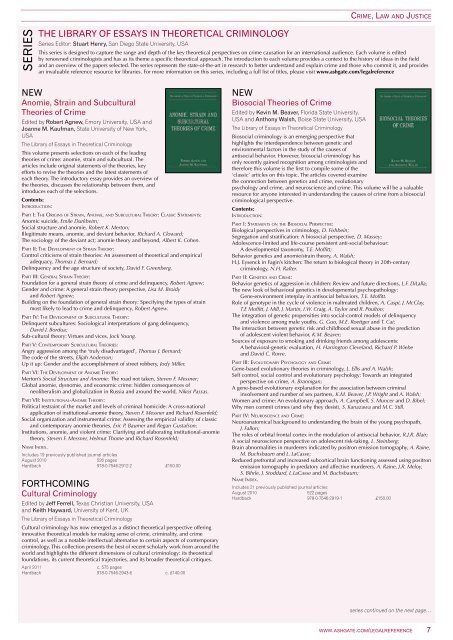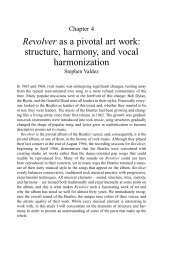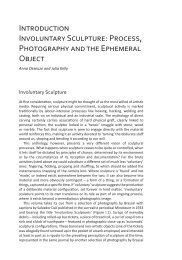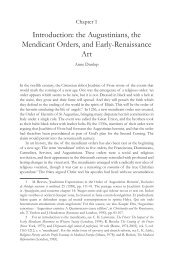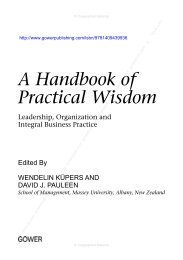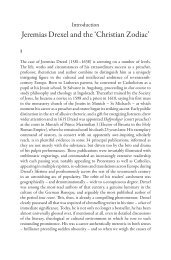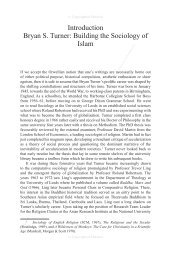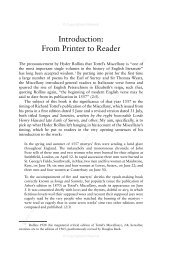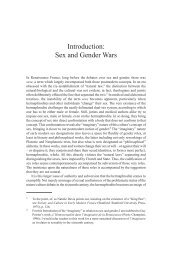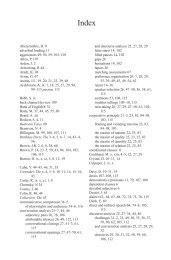facebook - Ashgate
facebook - Ashgate
facebook - Ashgate
Create successful ePaper yourself
Turn your PDF publications into a flip-book with our unique Google optimized e-Paper software.
SERIES<br />
THE LIBRARY OF ESSAYS IN THEORETICAL CRIMINOLOGY<br />
Series Editor: Stuart Henry, San Diego State University, USA<br />
This series is designed to capture the range and depth of the key theoretical perspectives on crime causation for an international audience. Each volume is edited<br />
by renowned criminologists and has as its theme a specific theoretical approach. The introduction to each volume provides a context to the history of ideas in the field<br />
and an overview of the papers selected. The series represents the state-of-the-art in research to better understand and explain crime and those who commit it, and provides<br />
an invaluable reference resource for libraries. For more information on this series, including a full list of titles, please visit www.ashgate.com/legalreference<br />
NEW<br />
Anomie, Strain and Subcultural<br />
Theories of Crime<br />
Edited by Robert Agnew, Emory University, USA and<br />
Joanne M. Kaufman, State University of New York,<br />
USA<br />
The Library of Essays in Theoretical Criminology<br />
This volume presents selections on each of the leading<br />
theories of crime: anomie, strain and subcultural. The<br />
articles include original statements of the theories, key<br />
efforts to revise the theories and the latest statements of<br />
each theory. The introductory essay provides an overview of<br />
the theories, discusses the relationship between them, and<br />
introduces each of the selections.<br />
Contents:<br />
INTRODUCTION:<br />
PART I: THE ORIGINS OF STRAIN,ANOMIE, AND SUBCULTURAL THEORY: CLASSIC STATEMENTS:<br />
Anomic suicide, Emile Durkheim;<br />
Social structure and anomie, Robert K. Merton;<br />
Illegitimate means, anomie, and deviant behavior, Richard A. Cloward;<br />
The sociology of the deviant act; anomie theory and beyond, Albert K. Cohen.<br />
PART II: THE DEVELOPMENT OF STRAIN THEORY:<br />
Control criticisms of strain theories: An assessment of theoretical and empirical<br />
adequacy, Thomas J. Bernard;<br />
Delinquency and the age structure of society, David F. Greenberg.<br />
PART III: GENERAL STRAIN THEORY:<br />
Foundation for a general strain theory of crime and delinquency, Robert Agnew;<br />
Gender and crime: A general strain theory perspective, Lisa M. Broidy<br />
and Robert Agnew;<br />
Building on the foundation of general strain theory: Specifying the types of strain<br />
most likely to lead to crime and delinquency, Robert Agnew.<br />
PART IV: THE DEVELOPMENT OF SUBCULTURAL THEORY:<br />
Delinquent subcultures: Sociological interpretations of gang delinquency,<br />
David J. Bordua;<br />
Sub-cultural theory: Virtues and vices, Jock Young.<br />
PART V: CONTEMPORARY SUBCULTURAL THEORIES:<br />
Angry aggression among the ‘truly disadvantaged’, Thomas J. Bernard;<br />
The code of the streets, Elijah Anderson;<br />
Up it up: Gender and the accomplishment of street robbery, Jody Miller.<br />
PART VI: THE DEVELOPMENT OF ANOMIE THEORY:<br />
Merton’s Social Structure and Anomie: The road not taken, Steven F. Messner;<br />
Global anomie, dysnomie, and economic crime: hidden consequences of<br />
neoliberalism and globalization in Russia and around the world, Nikos Passas.<br />
PART VII: INSTITUTIONAL-ANOMIE THEORY:<br />
Political restraint of the market and levels of criminal homicide: A cross-national<br />
application of institutional-anomie theory, Steven F. Messner and Richard Rosenfeld;<br />
Social organization and instrumental crime: Assessing the empirical validity of classic<br />
and contemporary anomie theories, Eric P. Baumer and Regan Gustafson;<br />
Institutions, anomie, and violent crime: Clarifying and elaborating institutional-anomie<br />
theory, Steven F. Messner, Helmut Thome and Richard Rosenfeld;<br />
NAME INDEX.<br />
Includes 19 previously published journal articles<br />
August 2010 526 pages<br />
Hardback 978-0-7546-2912-2 £150.00<br />
FORTHCOMING<br />
Cultural Criminology<br />
Edited by Jeff Ferrell, Texas Christian University, USA<br />
and Keith Hayward, University of Kent, UK<br />
The Library of Essays in Theoretical Criminology<br />
Cultural criminology has now emerged as a distinct theoretical perspective offering<br />
innovative theoretical models for making sense of crime, criminality, and crime<br />
control, as well as a notable intellectual alternative to certain aspects of contemporary<br />
criminology. This collection presents the best of recent scholarly work from around the<br />
world and highlights the different dimensions of cultural criminology: its theoretical<br />
foundations, its current theoretical trajectories, and its broader theoretical critiques.<br />
April 2011 c. 575 pages<br />
Hardback 978-0-7546-2943-6 c. £140.00<br />
NEW<br />
Biosocial Theories of Crime<br />
Edited by Kevin M. Beaver, Florida State University,<br />
USA and Anthony Walsh, Boise State University, USA<br />
The Library of Essays in Theoretical Criminology<br />
Biosocial criminology is an emerging perspective that<br />
highlights the interdependence between genetic and<br />
environmental factors in the study of the causes of<br />
antisocial behavior. However, biosocial criminology has<br />
only recently gained recognition among criminologists and<br />
therefore this volume is the first to compile some of the<br />
‘classic’ articles on this topic. The articles covered examine<br />
the connection between genetics and crime, evolutionary<br />
psychology and crime, and neuroscience and crime. This volume will be a valuable<br />
resource for anyone interested in understanding the causes of crime from a biosocial<br />
criminological perspective.<br />
Contents:<br />
INTRODUCTION:<br />
CRIME, LAW AND JUSTICE<br />
PART I: STATEMENTS ON THE BIOSOCIAL PERSPECTIVE:<br />
Biological perspectives in criminology, D. Fishbein;<br />
Segregation and stratification: A biosocial perspective, D. Massey;<br />
Adolescence-limited and life-course persistent anti-social behaviour:<br />
A developmental taxonomy, T.E. Moffitt;<br />
Behavior genetics and anomie/strain theory, A. Walsh;<br />
H.J. Eysenck in Fagin’s kitchen: The return to biological theory in 20th-century<br />
criminology, N.H. Rafter.<br />
PART II: GENETICS AND CRIME:<br />
Behavior genetics of aggression in children: Review and future directions, L.F. DiLalla;<br />
The new look of behavioral genetics in developmental psychopathology:<br />
Gene-environment interplay in antisocial behaviors, T.E. Moffitt.<br />
Role of genotype in the cycle of violence in maltreated children, A. Caspi, J. McClay,<br />
T.E Moffitt, J. Mill, J. Martin, I.W. Craig, A. Taylor and R. Poulton;<br />
The integration of genetic propensities into social-control models of delinquency<br />
and violence among male youths, G. Guo, M.E. Roettger and T. Cai;<br />
The interaction between genetic risk and childhood sexual abuse in the prediction<br />
of adolescent violent behavior, K.M. Beaver;<br />
Sources of exposure to smoking and drinking friends among adolescents:<br />
A behavioral-genetic evaluation, H. Harrington Cleveland, Richard P. Wiebe<br />
and David C. Rowe.<br />
PART III: EVOLUTIONARY PSYCHOLOGY AND CRIME:<br />
Gene-based evolutionary theories in criminology, L. Ellis and A. Walsh;<br />
Self control, social control and evolutionary psychology: Towards an integrated<br />
perspective on crime, A. Brannigan;<br />
A gene-based evolutionary explanation for the association between criminal<br />
involvement and number of sex partners, K.M. Beaver, J.P. Wright and A. Walsh;<br />
Women and crime: An evolutionary approach, A. Campbell, S. Muncer and D. Bibel;<br />
Why men commit crimes (and why they desist), S. Kanazawa and M.C. Still.<br />
PART IV: NEUROSCIENCE AND CRIME:<br />
Neuroanatomical background to understanding the brain of the young psychopath,<br />
J. Fallon;<br />
The roles of orbital frontal cortex in the modulation of antisocial behavior, R.J.R. Blair;<br />
A social neuroscience perspective on adolescent risk-taking, L. Steinberg;<br />
Brain abnormalities in murderers indicated by positron emission tomography, A. Raine,<br />
M. Buchsbaum and L. LaCasse;<br />
Reduced prefrontal and increased subcortical brain functioning assessed using positron<br />
emission tomography in predatory and affective murderers, A. Raine, J.R. Meloy,<br />
S. Bihrle, J. Stoddard, L.LaCasse and M. Buchsbaum;<br />
NAME INDEX.<br />
Includes 21 previously published journal articles<br />
August 2010 522 pages<br />
Hardback 978-0-7546-2919-1 £150.00<br />
series continued on the next page…<br />
WWW.ASHGATE.COM/LEGALREFERENCE 7


